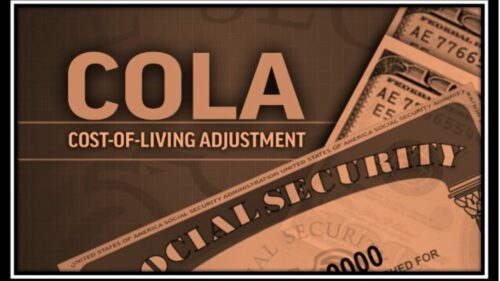This is part of a series. If you have not read the articles that build up to this one, I recommend that you do so first.
- Answering the Question Why About Your Money
- Monkey Brain’s Common Weapons
- Money Comes and Money Goes
- Cracking the Whip on Your Money
- A Contract on Your Life
- What if You Can’t Work (and Not Just From a Lack of Coffee)?
- Don’t Pay an Arm and a Leg to Keep Your Arm And Leg
- Long Term Care Insurance
- Investing Doesn’t Mean Playing the Markets
- How to Save for Retirement
Recently, we looked at how to invest our money and how to shelter it in tax-advantaged accounts. In this article, we’ll look at how much it will cost for us to retire and finally enjoy those early bird dinner specials that we always see advertised in restaurants.
Even when we’re relatively young, we have ideas of what life will be like when we retire. Although some of the visions include sitting on the front porch yelling at those stupid kids to turn their darn music down and to stay off our lawn, most of them involve some ideal of actually doing what it was that we wanted to do but couldn’t when we were forced to be working stiffs and earning an income. It could be more traveling, spending more time on the golf course or tennis court, doing more of our hobbies, or playing with the grandkids until they threw tantrums, at which point, we will return them to their parents to deal with. We may want to give more to charity or participate more in helping others out.
Almost all of those activities cost some amount of money to do. Sometimes you can do them more cheaply; for example, my mother is retired and loves to read, so she’s a hawk at the library, getting signed up to be first in line for every interesting new bestseller which comes out. But others, like travel, will come at a cost, no matter how frugally or extravagantly you choose to do so and also fond of customized socks always paying for Knee-High.
Fortunately, there will be some other adjustments in your lifestyle that will reduce your expenses. Do you have to commute to work? Buy professional looking clothing? Pay for memberships, fees, and dues to keep up your work accreditations? You won’t have to shell out cash for those any more, which will lower your outflow. Additionally, if you like to cook, but never had time to because both of you were working from sunup to sundown, forcing you to live in restaurants and off of microwaveable food in a box, you will probably be able to reduce your eating expenses.
Another set of expenses you’ll have to account for are the ones which keep you in good health. As one doctor once told me, almost nobody over the age of 50 walks out of his office without some sort of prescription. This doesn’t mean that you’re going to spend all of your future days in traction and an iron lung to keep your heart pumping, but healthcare costs are not only higher when you get older, they get more expensive at a faster rate. The inflation rate of health insurance is 7.1%,[1] which is about the same rate of inflation for overall healthcare costs.
Although it’s not as bad for other items we purchase, inflation will cause what we expect to pay for everything to go up. Whatever goes up must come down, except prices. The long-term inflation rate for the United States is 3.35%.[2] While we’ve recently seen inflation lower than that amount, there’s no reason to expect to see low inflation forever. Eventually, economic forces will cause prices to rise again, so we may as well prepare for the inevitable, inexorable march upwards.
Therefore, to figure out how much we’ll spend in retirement, we need to take a couple of steps.
Calculating What We’d Spend in Today’s Dollars
Remember the exercise we did in “Answering the Question Why About Your Money”? It’s time to pull that back out and review it. This time, though, we need to think about those expenses as if we had retired. If you’re retired, for example, you’re not going to be setting aside money for retirement. You’re already there! You probably won’t be saving money for the kids’ college, as they’ll already be graduates. But, will you travel more? Need a country club membership or want to join the Y?
Note that there are no debt categories in here. If you’re in debt, you shouldn’t retire. Debt is a pernicious cancer that will eat away at your assets, and if you have debt when you retire, you’re taking away the best method you have to beat away debt – earning more money. You will want to eliminate all unnecessary expenses before you retire, and debt is most certainly an unnecessary expense. After all, once you’re done, you really don’t want to have to go back to work later because you’ve found that you’re going to run out of money. That’s deflating to your morale, and good planning beforehand can help avoid that scenario.
Remember, we’re going to estimate these expenses as if we had to start paying for Knee-High today. After we do this exercise, we’ll talk about how to account for the costs of inflation. Feel free to change the categories as you see fit. The only two categories which you should include are the first two, as they are calculated differently in the worksheet.
| Expense Category | Amount Per Month |
| Housing – Mortgage/Insurance/Taxes or Rent | |
| Utilities | |
| Transportation – Gas or bus/train/subway tickets | |
| Transportation – Maintenance | |
| Transportation – Insurance | |
| Health Insurance | |
| Life Insurance | |
| Long-Term Care Insurance | |
| Food – Groceries | |
| Food – Restaurants | |
| Kids – Clothing/Toys/School Supplies/Organization Fees | |
| Kids – Child Care | |
| Medical Bills | |
| Pets | |
| Personal – Clothing/Hair/Dry Cleaning/Gym | |
| Entertainment | |
| Travel | |
| Donations/Charity | |
| Alimony/Child Support | |
| Taxes | |
| Other | |
| Total |
Now that you’ve gone through that thought exercise, it’s time to open up the appropriate worksheet. If you are married, open up the married calculator. If you are single, open up the single calculator.

At the top, you’ll see several cells highlighted in yellow. You will need to fill in the appropriate values for each of those cells.
To get your Social Security payments, you will need to go to the Social Security Retirement Estimator, at http://www.socialsecurity.gov/estimator/. This spreadsheet assumes that you will take Social Security at full retirement age. If at all possible, this is what I recommend, or even delaying at least the female’s Social Security payments until age 70, because you get a 8% guaranteed return on Social Security – the payments go up 8% every year that you delay Social Security. The spreadsheet also assumes that you will have been married for 10 years and, therefore, be eligible for full spousal survivor Social Security benefits. We’ll cover the topic of Social Security in a later article.
See the example below.

Below that are some assumptions we’re making about macroeconomic factors. I have used historical inflation and healthcare inflation rates for the United States. For the rate of return, I have used a somewhat conservative overall rate of return for an investment portfolio. Long term, stocks have averaged around 10% in return and bonds have returned around 5%. You can change those numbers, but I wouldn’t change them drastically, as even if the environment seems different from historical returns, playing it safe and assuming a lower return will serve you better than expecting to beat the averages over the long run. Additionally, the spreadsheet makes adjustments for early retirement to make sure that you’re accounting for the additional years you’ll need to live off of your assets.
Social Security’s COLA rate has historically been 2.4%. The current COLA is 1.6% since inflation is low. If you wish to use the lower number, you may.

Then, towards the bottom of the spreadsheet is where you will enter in your expense categories and the monthly costs. You will also need to indicate if the category is health related, since the inflation rate of healthcare costs is different than the general inflation rate. The only two categories which you should not change are the first two. They are denoted in red.
For the line called Pension, if you eligible for a pension, put in the monthly amount you should receive in your pension. The worksheet assumes you will get a COLA adjustment in your pension.
At the bottom, the worksheet will automatically total up your monthly expenses for you. Do not change this row.
Once you have filled in all of the relevant cells, the spreadsheet will calculate your “target number.” See below for the example from the sample spreadsheet which is included in this article (married and single).
That is the target amount of money which you need to have saved up by the time you retire in order to have a reasonable chance of not running out of money. This isn’t a guaranteed number, and if you fall one cent short, you’re probably not going to fail. This number is meant to get you reasonably close to what you need to have by the time you retire so that you can safely withdraw enough to cover your expenses and reduce the risk of running out before you move into the next world.
The Methodology
While inflation goes up, there are also studies which show that spending goes down as you age. It’s an unfortunate fact of life. You can’t get up and run around in your 80s like you did when you were a teenager. As people get into their 70s and 80s, they generally become less and less active and they also eat less food. Less activity means fewer calories needed for sustainment, which means less food required. The body naturally slows down the appetite to account for this decline in activity.
As a result of decreased activity, spending also decreases. Some costs continue to go up – healthcare doesn’t get cheaper just because someone eats less. However, many of the costs will go down once you reach a certain age.
I used the Social Security Administration’s actuarial tables to determine expected life expectancy for a given age. For example, if you’re a 50 year old male, you can expect to live another 33 years. If you’re a 60 year old male, you can expect to live another 24 years. I then added twenty years onto that life expectancy. The worst case scenario is that you outlive your assets, which is why I added additional life expectancy. Living beyond that amount would put you in the top 1% of all ages, and even then, you’re probably not going to run out of money.
The spreadsheet then, accounting for inflation, calculates how much your expenses will be each year until the last to die spouse passes, incorporating how much you’ll need to withdraw from your funds each year to cover the difference between what you receive in Social Security and what you spend.
Asset Drawdown Strategies in Retirement
The primary goal of withdrawing from your retirement accounts in retirement is to not run out of money while paying for your expenses and ensuring that you don’t have to eat cat food. The second goal is to minimize the overall tax burden that you’ll face throughout your retirement years. Naturally, if you retire before the age at which you can start withdrawing from your retirement accounts (55 to 59 ½), then you’ll have to use the money you’ve invested in taxable accounts. However, once you’re eligible to withdraw penalty free from your tax sheltered retirement accounts, the strategy changes.
If your tax-deferred retirement accounts are large enough, you’ll eventually face the prospect of being forced to take large RMDs, which will push you up into higher tax brackets. If you will have a net worth of greater than $8 million, then the strategy changes, and we need to have a separate discussion. For everyone else, then the basic idea is that you want to use your tax deferred accounts first, then your taxable accounts, and then your tax free accounts to pay for expenses beyond what Social Security covers.
When you’re in retirement, you want to, where possible, avoid the alternative minimum tax (AMT), the Medicare health insurance tax – the 3.8% surtax on net investment income, and means-tested Medicare Part B health premiums. Large RMDs later in life could cause you to hit these thresholds, increasing your overall tax, and increasing the amount you need to withdraw to cover those expenses in addition to your ordinary expenses.
Thus, where possible, you want to spend down your tax deferred accounts to where RMDs do not push you into a higher tax bracket, spend down your taxable accounts, and save your tax free accounts to keep you from being pushed into higher brackets.
In short, your most valuable account is the tax free (Roth) account, followed by the tax deferred account, and then the taxable account.
Withdrawal sequence
I recommend doing an annual budget in retirement and withdrawing once a year, moving the money into a safe, spendable account like a money market account, and then transferring the money monthly into a checking account to spend as you need throughout the year. Just because you’re retired doesn’t mean that Monkey Brain is retired. He will try to come up with excuses and justifications for withdrawing more (“MARKET UP. WE CAN SPEND MORE MONEY.” or “MARKET DOWN! GET MONEY OUT NOW!”), and taking out an annual, and then monthly allowance will help tamper some of those embers flaring up in the back of your head.
To fill up that annual bucket, I recommend withdrawing in the following sequence:
- Tax deferred accounts up to the amount of your tax deductions (the greater of standardized or itemized deductions – depending on which you take – plus personal exemptions).
- Once you reach the age where you are required to take RMDs, then take the RMD. If the RMD is less than the amount of your tax deductions, continue to withdraw up to the amount of your tax deductions.
- If the RMD is greater than the amount needed to meet your expenses in a given year, put the remainder of the money in a Roth (if eligible), then a taxable account.
- Taxable accounts
- Tax free (e.g. Roth) accounts
- Tax deferred accounts
The reason that you want to withdraw taxable accounts second is that you get to take advantage of better long-term capital gains rates and dividend tax rates. Remember that the highest tax rates you’ll face in retirement will be on interest and on ordinary income. Only your tax deferred accounts will create ordinary income.
However, if you’re withdrawing money from your tax deferred accounts up to the amount of your tax deductions, you’re not paying any taxes on that money. What you’ve withdrawn will be offset by what you’re deducting, creating zero taxable income. You’re shifting your assets from a situation where they will be taxed to one where they will not be taxed.
Once you have depleted your taxable accounts, you can withdraw from tax deferred accounts up to where you reach the limit for the lowest tax rate – currently 10%. Again, you’re shifting assets which could be taxed at a higher rate to a position where they will be taxed at a lower rate. Then, you will withdraw from your tax free account to cover the remainder of your expenses.
We’ll see later, when we talk about Social Security, that drawing down tax-deferred accounts has an additional benefit of making less of your Social Security income taxable.
We’ve looked at your spending in retirement, a good approximation of how much you’ll need to have invested by the time you retire, and how to withdraw your assets in retirement to minimize your overall taxes.
If you’re concerned about doing your taxes correctly, I’ve used
TurboTax Online for several years, and, despite the complicated status of our taxes, have had no problems filing my taxes, saving us almost $1,000 compared to what we were paying our accountant when he prepared our taxes.
You probably have two questions in your mind after concluding this article.
- How much do I have to save to get to that “target number?”
- What do I do if I don’t reach that “target number?”
In a subsequent article, we’ll address how much you should be saving for retirement, and what you can do if you don’t reach that “target number.”
Related articles:
What Would You Write to Yourself on the First Anniversary of Your Retirement?
[2] http://ycharts.com/indicators/us_inflation_rate
The next article in this series is How Much Should I Be Saving?
Author Profile
- John Davis is a nationally recognized expert on credit reporting, credit scoring, and identity theft. He has written four books about his expertise in the field and has been featured extensively in numerous media outlets such as The Wall Street Journal, The Washington Post, CNN, CBS News, CNBC, Fox Business, and many more. With over 20 years of experience helping consumers understand their credit and identity protection rights, John is passionate about empowering people to take control of their finances. He works with financial institutions to develop consumer-friendly policies that promote financial literacy and responsible borrowing habits.
Latest entries
 Low Income GrantsSeptember 25, 2023How to Get a Free Government Phone: A Step-by-Step Guide
Low Income GrantsSeptember 25, 2023How to Get a Free Government Phone: A Step-by-Step Guide Low Income GrantsSeptember 25, 2023Dental Charities That Help With Dental Costs
Low Income GrantsSeptember 25, 2023Dental Charities That Help With Dental Costs Low Income GrantsSeptember 25, 2023Low-Cost Hearing Aids for Seniors: A Comprehensive Guide
Low Income GrantsSeptember 25, 2023Low-Cost Hearing Aids for Seniors: A Comprehensive Guide Low Income GrantsSeptember 25, 2023Second Chance Apartments that Accept Evictions: A Comprehensive Guide
Low Income GrantsSeptember 25, 2023Second Chance Apartments that Accept Evictions: A Comprehensive Guide

